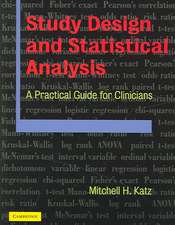Essential Equations for Anaesthesia: Key Clinical Concepts for the FRCA and EDA
Autor Edward T. Gilbert-Kawai, Marc D. Wittenbergen Limba Engleză Paperback – 7 mai 2014
Preț: 330.25 lei
Preț vechi: 347.62 lei
-5% Nou
Puncte Express: 495
Preț estimativ în valută:
63.21€ • 65.14$ • 53.36£
63.21€ • 65.14$ • 53.36£
Carte tipărită la comandă
Livrare economică 04-18 martie
Preluare comenzi: 021 569.72.76
Specificații
ISBN-13: 9781107636606
ISBN-10: 1107636604
Pagini: 218
Ilustrații: 10 b/w illus. 24 tables
Dimensiuni: 156 x 234 x 12 mm
Greutate: 0.31 kg
Ediția:New.
Editura: Cambridge University Press
Colecția Cambridge University Press
Locul publicării:New York, United States
ISBN-10: 1107636604
Pagini: 218
Ilustrații: 10 b/w illus. 24 tables
Dimensiuni: 156 x 234 x 12 mm
Greutate: 0.31 kg
Ediția:New.
Editura: Cambridge University Press
Colecția Cambridge University Press
Locul publicării:New York, United States
Cuprins
Preface; Foreword; Part I. Physics: Section 1A. Gases: 1. Boyle's law; 2. Charles' law; 3. Gay–Lussac's law; 4. Avogadro's law; 5. Universal gas equation; 6. Dalton's law of partial pressures; 7. Henry's law; 8. Graham's law of diffusion; Section 1B. Pressure and Flow: 1. Pressure and force; 2. Hagen–Poiseuille equation and laminar flow; 3. Reynold's number and turbulent flow; 4. Laplace's law and tension; 5. Bernoulli equation and Venturi effect; Section 1C. Electricity: 1. Ohm's law: voltage, current and resistance; 2. Capacitance; 3. Inductance; 4. Work and power; 5. Transformers; 6. Electrical charge; Section 1D. Other: 1. Doppler equation and Doppler effect; 2. Beer–Lambert law; 3. Humidity; 4. Natural frequency; 5. Wave equation and ultrasound; Part II. Pharmacology: Section 2A. Pharmacokinetics: 1. Bioavailability; 2. Volume of distribution; 3. Clearance; 4. Hepatic clearance; 5. Concentration and elimination; 6. Plasma concentration and compartment models; 7. Loading dose and maintenance dose; 8. Exponential function and rate constant; 9. Half life and context-sensitive half life; 10. Time constant; 11. Rates of reaction; 12. Michaelis–Menten equation; Section 2B. Pharmacodynamics: 1. Drug-receptor dissociation constant and affinity; 2. Therapeutic index; Part III. Physiology: Section 3A. Cardiovascular: 1. Cardiac output and cardiac index; 2. Stroke volume; 3. Ventricular stroke work and index; 4. Ejection fraction and fractional area change; 5. Coronary perfusion pressure and coronary blood flow; 6. Bazett's formula – QT interval corrected; 7. The Fick principle – cardiac output measurement; 8. The Fick equation – oxygen uptake measurement; 9. Mean arterial pressure; 10. Venous return; 11. Total blood volume; 12. Systemic vascular resistance; 13. Uterine blood flow; 14. Stewart-Hamilton equation; 15. Oxygen delivery; 16. Oxygen extraction ratio; 17. Oxygen content; 18. The dilution principle – measurement of fluid compartment volume; Section 3B. Respiratory: 1. Diffusing capacity; 2. Compliance; 3. Bohr equation; 4. Alveolar ventilation equation; 5. Alveolar gas equation; 6. Helium dilution technique; 7. Spirometry: forced expiration; 8. Lung volumes and capacities; 9. Respiratory quotient (and respiratory exchange ratio); 10. Shunt equation; 11. Pulmonary vascular resistance; Section 3C. Renal: 1. Renal filtration fraction; 2. Renal clearance and Cockcroft–Gault formula; 3. Starling's equation – rate of filtration; 4. Fick's law of diffusion; Section 3D. Cellular, Biochemical and Acid-base: 1. Osmolality, osmolarity and the osmolar gap; 2. Morse equation and osmotic pressure; 3. Anion gap; 4. Goldman equation; 5. Gibbs–Donnan effect; 6. Nernst equation; 7. pH; 8. pKa; 9. Acid-base compensation simplified; 10. Henderson–Hasselbalch equation; Section 3E. Neurological: 1. Cerebral perfusion pressure and intracranial pressure; 2. Intraocular pressure; Part IV. Statistics: 1. Binary classification tests and 2x2 tables; 2. Negative predictive value; 3. Positive predictive value; 4. Specificity; 5. Sensitivity; 6. Relative risk; 7. Relative risk reduction; 8. Absolute risk reduction; 9. Accuracy of test; 10. Chi-squared test; 11. Likelihood ratio; 12. Standard error of mean; 13. Standard deviation and variance; 14. Power; 15. Odds ratio; Appendix: 1. The international system of units; 2. Units of measurement; Index.
Recenzii
'… a worthwhile and enjoyable read, easy to browse through and a good means of revision …' P. J. Venn, British Journal of Anaesthesia
Descriere
Covers all of the equations that candidates need to understand and be able to apply when sitting postgraduate anaesthetic examinations.








